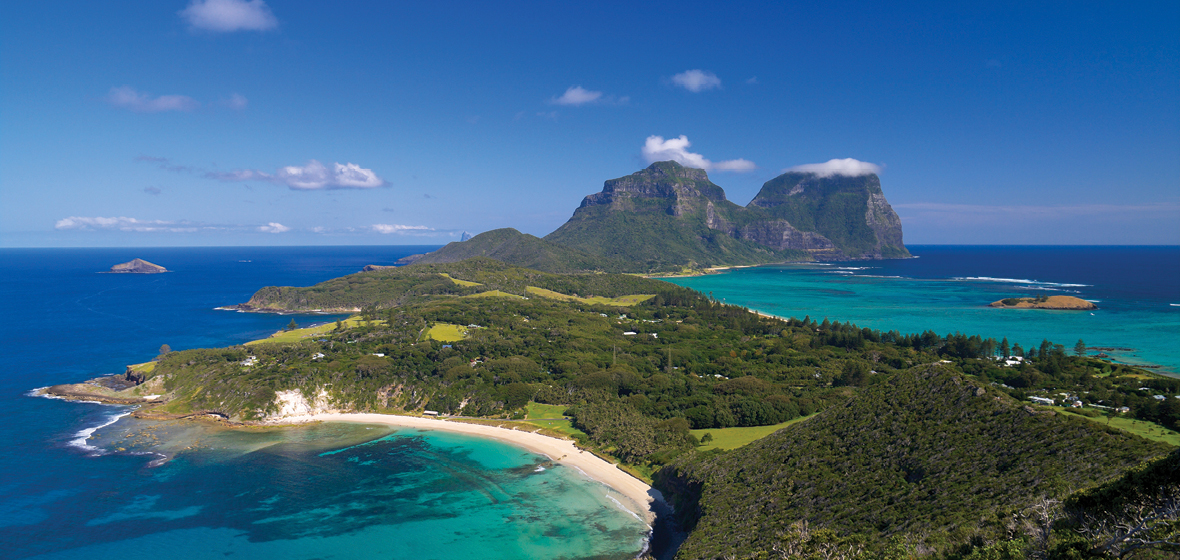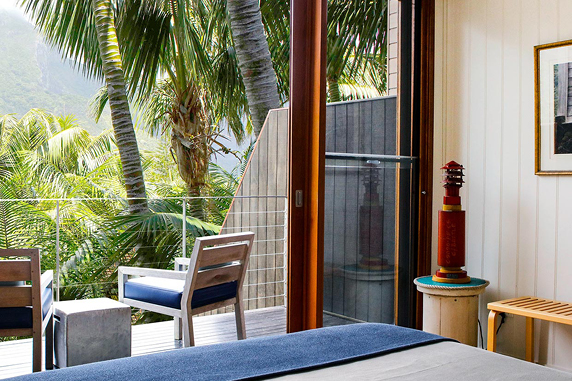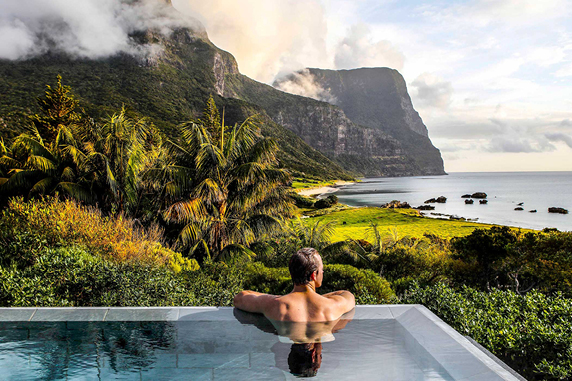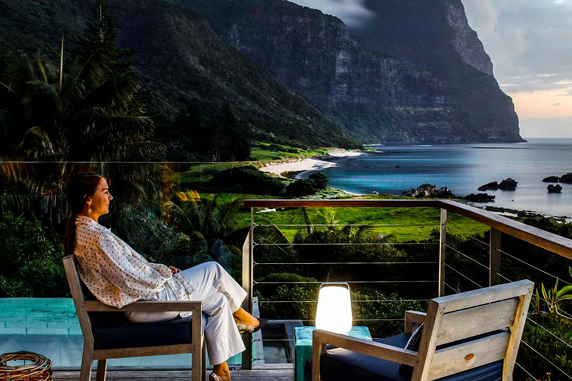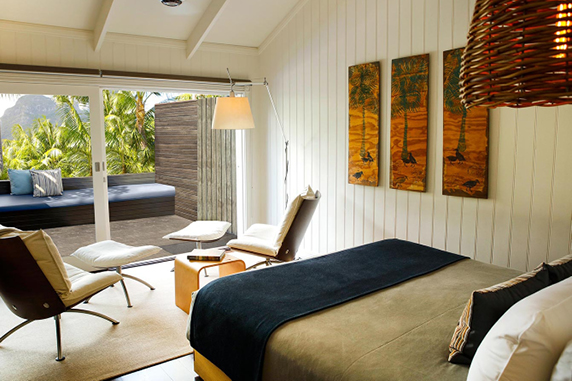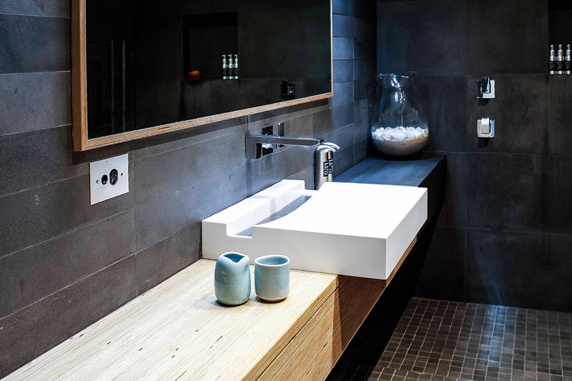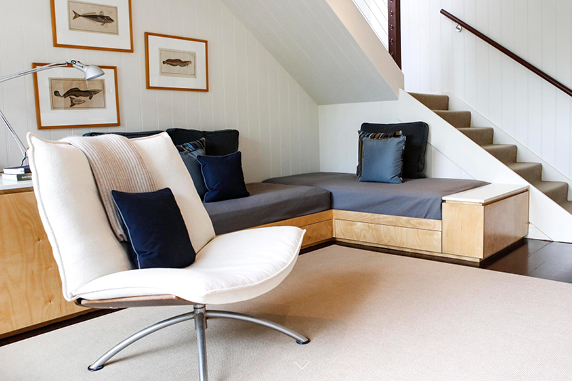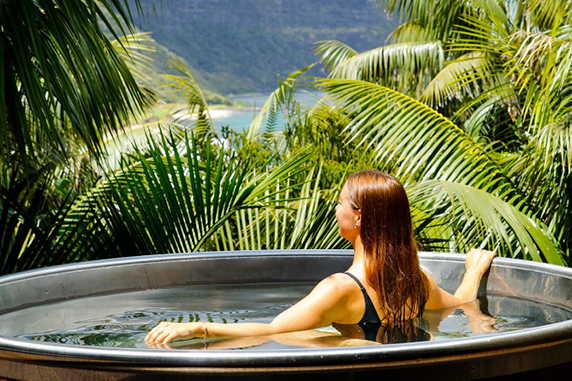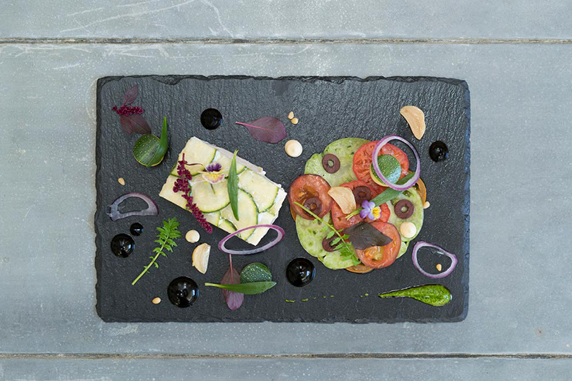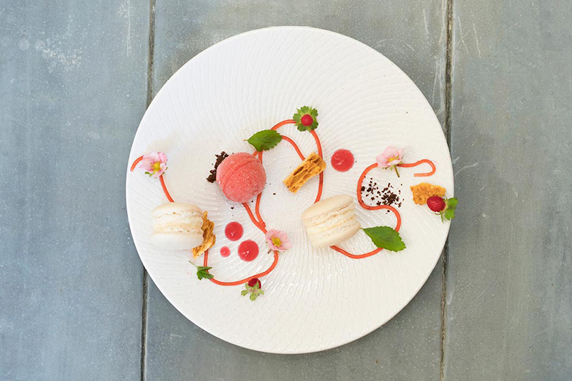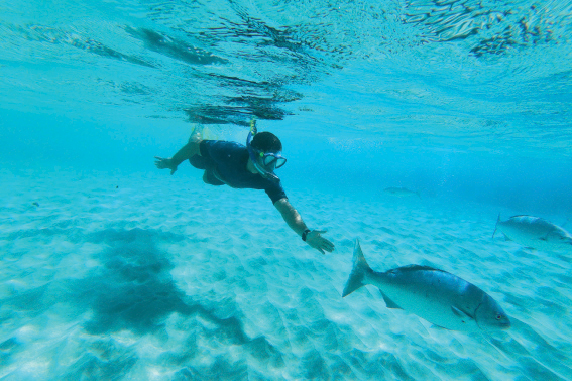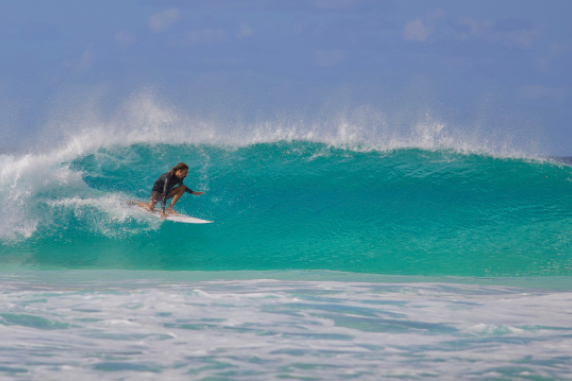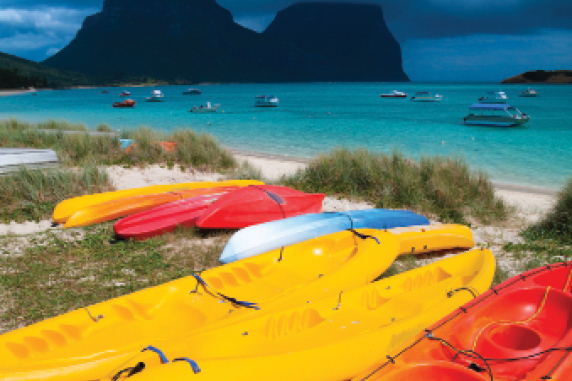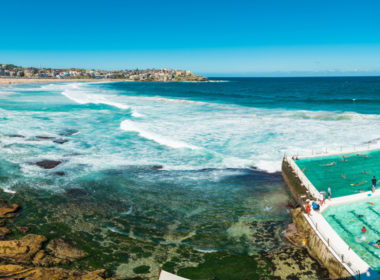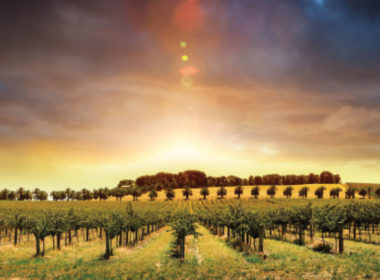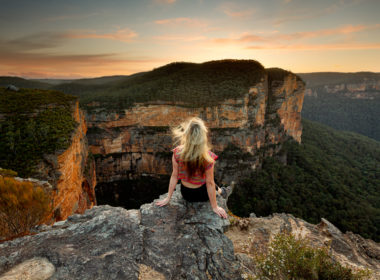It may not be another country; but at least you get to leave the mainland to visit Lord Howe Island. This UNESCO World Heritage-listed sanctuary is one of the last bastions of wilderness escapism – where mobile phones won’t work and tourist numbers are limited to protect the natural environment. The landscape is Jurassic, weather can be temperamental, and the water isn’t always hot (go to Queensland for that). But if you’re up for adventure, this Pacific playground should be on your bucket list.
HIKE
It may be only 11km long and 2km wide, but Lord Howe is laced with spectacular hiking trails. The island was born from an exploded underwater volcano, which explains its dramatic landscape and ashen-coloured mountains soaring from the depths of the Pacific. It also explains why most residents seem to have calves the size of tree trunks: the inclines are steep and plentiful.
The bucket-list climb is Mount Gower – an eight-hour round trek from sea level to 900m elevation, requiring helmets, ropes, and semi-abseiling sections that you must attempt with a qualified guide (book well in advance). Gower is the highest peak on the southern tip of the island, with its iconic tabletop summit one of two places in the world that rare Providence Petrels are known to nest. Dean Hiscox from Lord Howe Island Environmental tours has been taking groups up Gower for decades (he even runs it for unfathomable enjoyment) so pay attention when he explains the fitness levels required in the safety briefing. Apparently, almost every group has at least one member who won’t reach the summit. Hiscox has perfected his petrel call and a hilarious highlight is reaching the peak as he beckons the oblivious birds to land on heads, backpacks, and whatever else stands out like a tree.
The hike up Malabar Hill on the island’s northern side is gentler and offers commanding views looking south to Gower. The track from Mount Eliza to Old Gulch is another highlight – be sure to rock-hop around the eastern rock ledge of the gulch to take a dip in the highly Instagrammable Herring Pools.
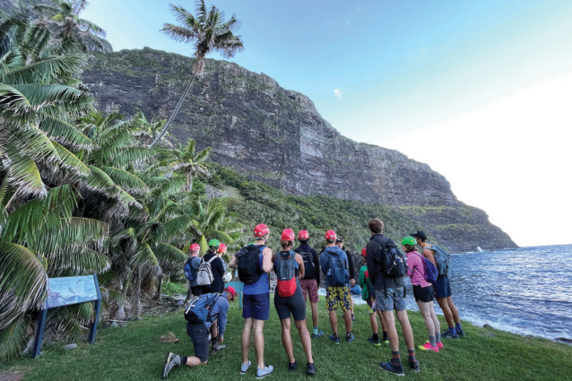
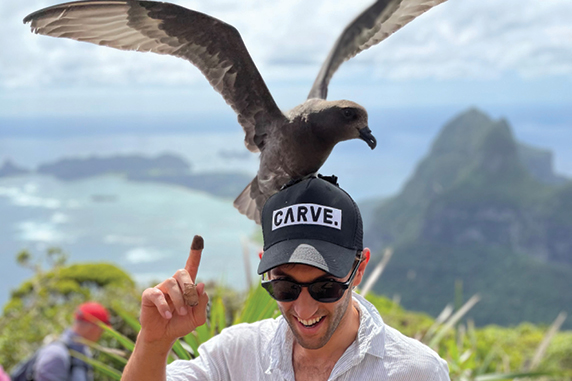
SLEEP
Accommodation is constrained by the Lord Howe Island Act 1953, which limits the island to just 400 tourist beds. This reduces the human footprint, ensuring beaches and trails remain empty, while the natural environment thrives. It also means booking a stay can be difficult in the post-COVID frenzy of people wishing to escape the mainland while international borders remain shut. Plan well in advance.
Couples will delight in Bowker Beach House, a luxe bungalow that platoons off the main road into lush jungle via a meandering boardwalk. The house feels as secluded as Tom Hanks did in Castaway, with bird song and the ruffle of wind through foliage punctuating quiet afternoons. Yet, it’s just a short stroll to the lagoon beachfront and packed with everything you need for activities: bikes, paddleboards, surfboards, kayaks, snorkels, picnic equipment and backpacks. Fresh-laid chook eggs, sourdough and Nespresso pods carry me through mornings, and four types of wine, beers and assorted antipasto complement the sunsets.
Self-contained cabins and apartments are the most common alternatives on Lord Howe. Lodges like Pinetrees Lodge include meals and even pack handy picnic lunches for your day at the beach. People tend to not spend much time in their rooms, so most rooms reflect that. However, if you’re looking to splurge, the $2,000-a-night Capella Lodge comes from the same luxury portfolio (Baillie Lodges) as Southern Ocean Lodge on Kangaroo Island and Longitude 131 at Uluru.
EAT
Lord Howe’s foodie scene has come a long way since this writer first visited the island in the early 2000s. Back then, menus deviated little from stock-standard pub fare but were priced like Michelin Star establishments. My parents opted to fish for our dinners: Dad nearly choked us with bones in every bite and Mum successfully murdered the fry-up with lumpy flour and too much oil.
After vowing to never eat kingfish again, my faith in the seafood is restored in 2021 by an array of heavy-hitting restaurants on Lord Howe Island. Topping the list is Arajilla Restaurant – an elegant jungle lodge serving alternate choices on an evolving set menu. You’ll have to plead for a booking as it caters first to guests of five-star Arajilla Retreat. Dishes like perfectly pink duck, or cured sashimi plated up with crispy titbits and creamy smudges, taste and look straight out of hatted kitchens on the mainland.
Don’t be fooled by the slightly kitsch décor of Anchorage Restaurant: boat paddles, anchors and rescue rings hang from walls of this charming bakery and café by day, fairy-lit diner by night. They belie the professionalism of its kitchen, where Executive Chef David Chlumksy has landed after stints in acclaimed Sydney restaurants Otto, Quay and Longrain. Chlumksy’s treatment of barbecued octopus, crisp scallops, and hot lungfuls of chilli-tomato prawn spaghetti will impress most astute diners from his former city.
Coral Café, parked in the entrance of the Lord Howe Island museum, is open daily for sandwiches, salads, and caffeine fixes. However, its dinners (Monday, Wednesday, and Fridays) featuring juicy grilled sirloins or – you guessed it – kingfish with sweet potato-spritzed salad, are rightly popular.
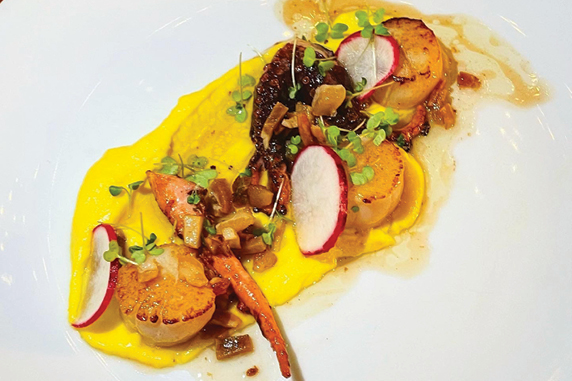
PLAY
Green light a trip to Lord Howe Island if you enjoy one or more of the following: surfing, fishing, snorkelling, paddle boarding, kayaking, kite surfing, diving, swimming, golf, cycling. Of course, you could also flop on the beach and read, but for most of the year, the climate tends to dictate an active holiday. The island is at the same latitude as the northern coast of NSW, so winters are cool (14 – 18 degrees Celsius) and the water drops to a fresh 18 degrees in August. The best way to stay warm is by plunging into the plethora of activities.
First, hit up Wilson’s Hire for bikes and snorkelling equipment. Most people travel the few kilometres between beaches and town on two wheels, but you might score one of three hire cars on the island if you reserve one in advance. The speed limit is 25km/h and bike helmets are strictly enforced by the island’s sole police officer. Shoes, however, are optional.
Shallow coral reef on the edge of the Pacific, protected by a ban on commercial fishing, means pristine snorkelling. Pop a dollar coin in the fish food dispenser of Ned’s Beach shed to guarantee your popularity with the enormous resident kingfish. On the lagoon side of the island, Lord Howe Island Environmental Tours deliver a professionally curated kaleidoscope of fish and coral viewing from glass-bottom boats. You will meet the island’s resident sea turtles as well as spotting multiple stingrays, rare fish, and coral species.
Other water sports like diving and kitesurfing launch from tour sheds on the lagoon beachfront. Surfers: pack your boards – there are 10 breaks that fire at different times depending on swell and wind direction. Blinky’s Beach presents a hollow green room on flat reef, while Ned’s is kinder to slow get-ups and longboard cruisers.
INSIDER TIPS
Wind can be a nuisance in the middle of the Pacific, but resident islander Rod Oxley has the best tip to avoid it: whichever direction the wind is blowing from, head to a beach on the opposite side. The island’s steep mountains provide shelter and multiple beaches facing different directions means there is always a leeward side.
There are no mobile phone towers on Lord Howe and Wi-Fi is patchy at restaurants and accommodation. Take advantage of the opportunity to disconnect.
Finally, the cap on visitor numbers and access to Lord Howe via small Dash-8 aircraft makes travel here quite exclusive. Flights are not cheap – around $1,200 return from Sydney – and meals on the island will see your wallet take a hit ($35-plus for mains). It’s not Bali, and it’s not for everyone, but that’s probably how the locals like it.

